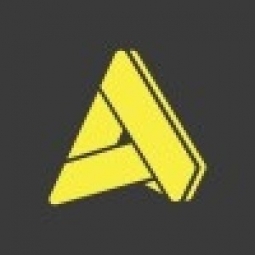公司规模
Large Corporate
地区
- Europe
- Asia
- America
国家
- Germany
- Switzerland
- Japan
- Sweden
- United States
产品
- i-Supply™
技术栈
- Vendor Managed Inventory (VMI)
实施规模
- Enterprise-wide Deployment
影响指标
- Cost Savings
- Productivity Improvements
- Customer Satisfaction
技术
- 平台即服务 (PaaS) - 数据管理平台
适用行业
- 医疗保健和医院
适用功能
- 物流运输
- 仓库和库存管理
用例
- 库存管理
- 供应链可见性(SCV)
服务
- 系统集成
关于客户
Stryker Osteosynthesis 是 Stryker Corporation 的一个部门,也是医疗技术行业中重建、创伤和脊柱产品的供应商。自 1941 年以来,Stryker 已发展成为价值 356 亿美元的骨科市场的全球领导者,提供一系列产品,改善 120 多个国家的医疗专业人员和患者的生活。骨科疾病和创伤每年影响数百万人,通过最先进的产品、简化的手术技术和提高的医院效率,Stryker 正在开发具有成本效益的解决方案并改善全球人民的生活。
挑战
Stryker Osteosynthesis 是医疗技术行业的一家重建、创伤和脊柱产品供应商,在管理其供应链方面面临挑战。客户对该公司寄予厚望,要求几乎所有产品都提供 24/7 的服务水平,需求波动,在不断变化的供应链中保持供需平衡,并确保供应商及时了解需求,而公司正面临这些挑战。该公司还面临着库存质量和产品供应延迟的问题。由于缺乏强大的供应链可视性,Stryker 无法优化其运营效率和效益。该公司正在经历牛鞭效应,这种效应源于错误的预测,并带来了额外的供应链挑战。Stryker 的运营效率受到不一致的入站/出站性能和制造负荷的影响,阻碍了公司以稳定、均匀的容量负荷运行以优化流程效率的能力。
解决方案
Stryker 决定将重点更多地放在公司的供应商和配送中心上,而不是其分支机构和最终客户。该公司评估了几种潜在的供应商管理库存 (VMI) 工具,并最终决定与 TradeBeam 及其 i-Supply 库存管理解决方案合作是最佳选择,因为它具有实时可见性和单一工具/视图产品。2006 年,Stryker 在三个生产基地部署了 TradeBeam 的 i-Supply 解决方案,其中两个在德国,一个在瑞士。这些生产基地与 Stryker 在日本的配送中心一起开始,使配送中心能够仅使用一个 VMI 工具与三个生产基地合作。Stryker 于 2007 年与其第一家供应商开始使用 i-Supply,并在年底前增加了两家供应商。
运营影响
数量效益

Case Study missing?
Start adding your own!
Register with your work email and create a new case study profile for your business.
相关案例.

Case Study
Hospital Inventory Management
The hospital supply chain team is responsible for ensuring that the right medical supplies are readily available to clinicians when and where needed, and to do so in the most efficient manner possible. However, many of the systems and processes in use at the cancer center for supply chain management were not best suited to support these goals. Barcoding technology, a commonly used method for inventory management of medical supplies, is labor intensive, time consuming, does not provide real-time visibility into inventory levels and can be prone to error. Consequently, the lack of accurate and real-time visibility into inventory levels across multiple supply rooms in multiple hospital facilities creates additional inefficiency in the system causing over-ordering, hoarding, and wasted supplies. Other sources of waste and cost were also identified as candidates for improvement. Existing systems and processes did not provide adequate security for high-cost inventory within the hospital, which was another driver of cost. A lack of visibility into expiration dates for supplies resulted in supplies being wasted due to past expiry dates. Storage of supplies was also a key consideration given the location of the cancer center’s facilities in a dense urban setting, where space is always at a premium. In order to address the challenges outlined above, the hospital sought a solution that would provide real-time inventory information with high levels of accuracy, reduce the level of manual effort required and enable data driven decision making to ensure that the right supplies were readily available to clinicians in the right location at the right time.

Case Study
Gas Pipeline Monitoring System for Hospitals
This system integrator focuses on providing centralized gas pipeline monitoring systems for hospitals. The service they provide makes it possible for hospitals to reduce both maintenance and labor costs. Since hospitals may not have an existing network suitable for this type of system, GPRS communication provides an easy and ready-to-use solution for remote, distributed monitoring systems System Requirements - GPRS communication - Seamless connection with SCADA software - Simple, front-end control capability - Expandable I/O channels - Combine AI, DI, and DO channels

Case Study
Driving Digital Transformations for Vitro Diagnostic Medical Devices
Diagnostic devices play a vital role in helping to improve healthcare delivery. In fact, an estimated 60 percent of the world’s medical decisions are made with support from in vitrodiagnostics (IVD) solutions, such as those provided by Roche Diagnostics, an industry leader. As the demand for medical diagnostic services grows rapidly in hospitals and clinics across China, so does the market for IVD solutions. In addition, the typically high cost of these diagnostic devices means that comprehensive post-sales services are needed. Wanteed to improve three portions of thr IVD:1. Remotely monitor and manage IVD devices as fixed assets.2. Optimizing device availability with predictive maintenance.3. Recommending the best IVD solution for a customer’s needs.

Case Study
HaemoCloud Global Blood Management System
1) Deliver a connected digital product system to protect and increase the differentiated value of Haemonetics blood and plasma solutions. 2) Improve patient outcomes by increasing the efficiency of blood supply flows. 3) Navigate and satisfy a complex web of global regulatory compliance requirements. 4) Reduce costly and labor-intensive maintenance procedures.

Case Study
Cloud-based healthcare solution for Royal Philips
Royal Philips wanted to launch its cloud-based healthcare solution HealthSuite Digital Platform in China to deliver services to help cope with challenges related to urbanization and population growth. Philips wanted to achieve this goal by combining mobile, cloud computing and big data technologies. To bring this platform and product to market, Philips required cloud computing and local technical service capabilities in China, in addition to a flexible IT infrastructure that could handle user requests.








